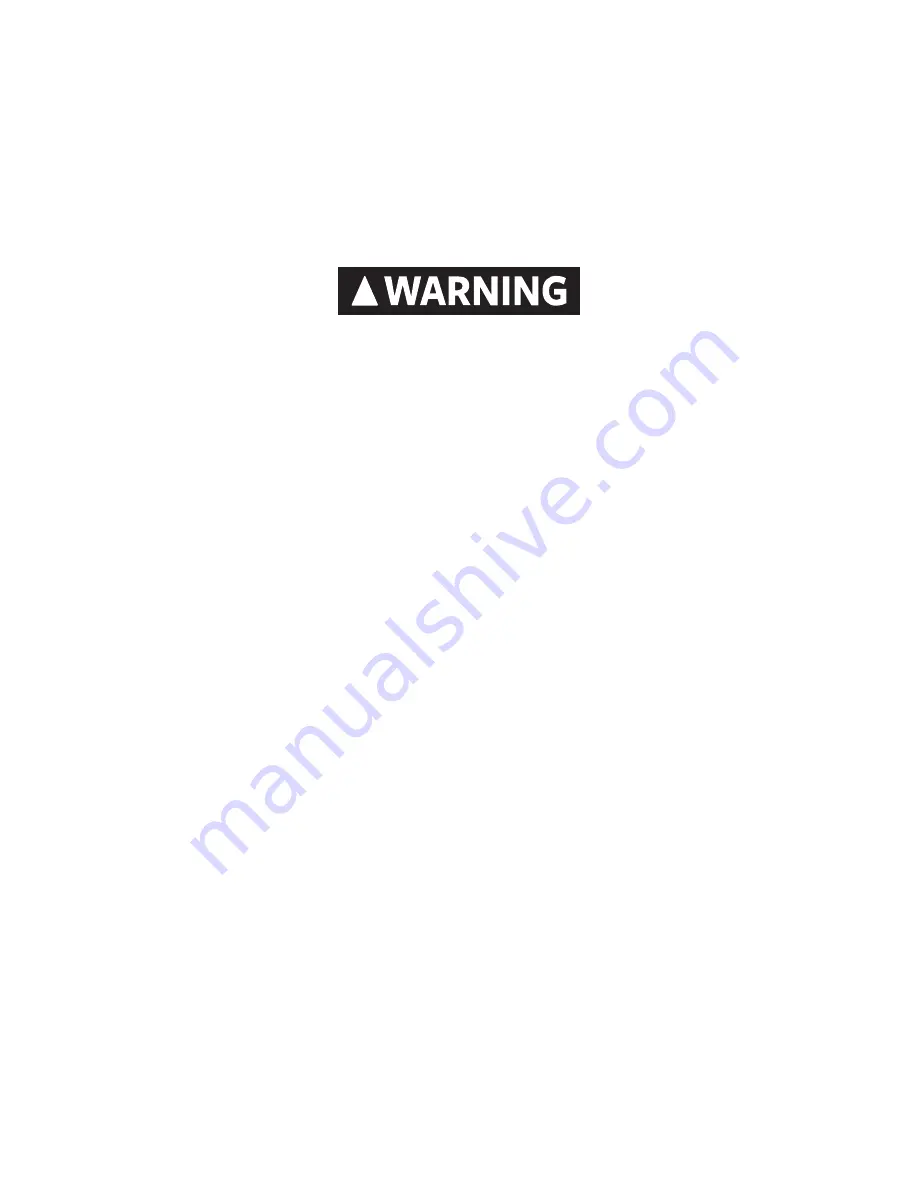
31
OPERATING INSTRUCTIONS
This section of the manual is to help you get maximum efficiency and maximum smoke (particulate) reduction from your FireRock
fireplace. If you experience any difficulty or have any questions concerning your fireplace, contact your dealer/distributor or
FireRock’s Technical Support Desk (888.876.1025).
IMPORTANT SAFETY INFORMATION
1. These fireplaces are not intended to heat an entire home or to be used as a primary heat source. They are designed to
ensure homeowner comfort by providing supplemental heat to the room. Overfiring, abusive burning, or mistreatment of
the fireplace unit can cause permanent damage to the unit and may result in a fire or explosion, causing property damage,
personal injury, or loss of life.
2. Use solid wood, processed solid fuel fire logs, natural gas, propane, or coal fuel only. Burning some fuels (such as charcoal)
can be hazardous due to the possibility of producing carbon monoxide, which is both invisible and odorless. Overexposure to
carbon monoxide can lead to illness and death. It is strongly recommended to install smoke and carbon monoxide detectors
wherever fireplaces are in use.
3. Never use gasoline, gasoline-type lantern fuel, kerosene, charcoal lighter fluid, or similar liquids to “freshen up” a fire in this
fireplace. Keep all such liquids well away from the fireplace while it is in use.
4. When the fireplace is in use, the fireplace damper must be set in the fully open position. Failure to open the damper during
use can cause smoke and hazardous gases to fill the house.
5. Young children should be carefully supervised when there is a fire burning in the fireplace. When the fireplace is in use,
components can become extremely hot, and may cause burns or other personal injuries if touched.
6. Keep clothing, furniture, fabrics, gasoline, liquids with flammable vapors, and all other combustible materials at a safe distance
from the fireplace when in use.
7. During use, portions of the fireplace, including, but not limited to, the hearth and side walls, can become hot. Maintain a safe
distance from the fireplace during operation. Touching hot surfaces may cause burns or other personal injuries.
8. Excessive ash should be removed before each use and be placed in a metal container with a tight fitting lid. The closed
container of ashes should be placed on a noncombustible floor or on the ground well away from all combustible materials,
pending final disposal. If the ashes are disposed of by burial in soil or otherwise locally dispersed, they should be retained in
the closed container until all cinders have thoroughly cooled.
9. Before servicing your fireplace, allow all parts of the fireplace system to cool. Failure to let the fireplace system cool before
servicing may cause burns or other personal injuries.
10. The fireplace and chimney should be inspected each year prior to the heating season to determine if creosote build-up has
occurred. If a significant layer of creosote has accumulated (1/8” or more), it should be removed to reduce the risk of chimney
fire.
11. To avoid the risk of damaging fireplace materials and increasing the risk of spreading a fire, do not use the fireplace to cook or
warm food.
















































